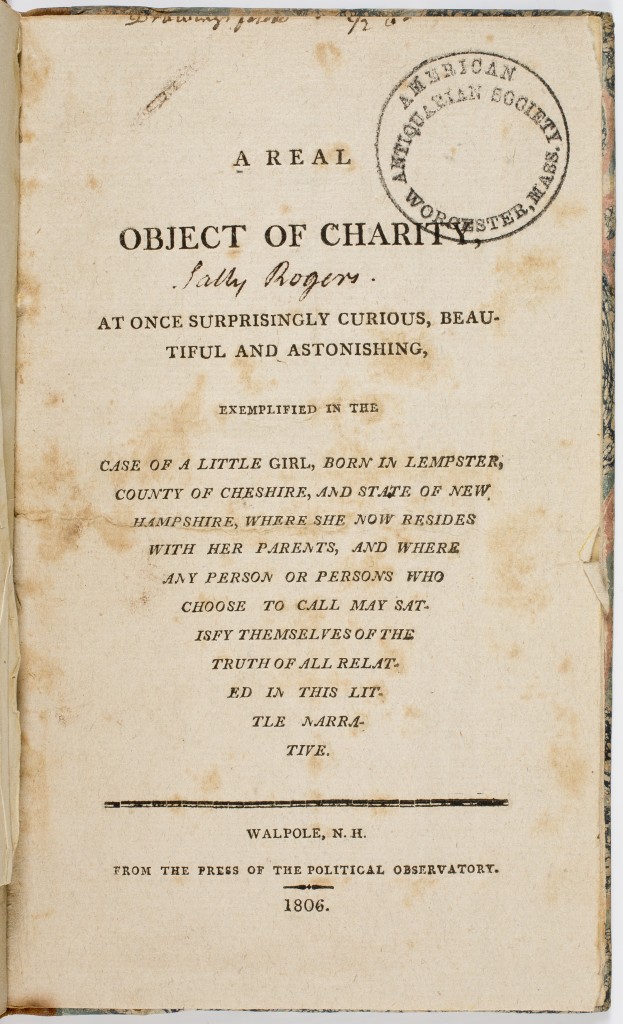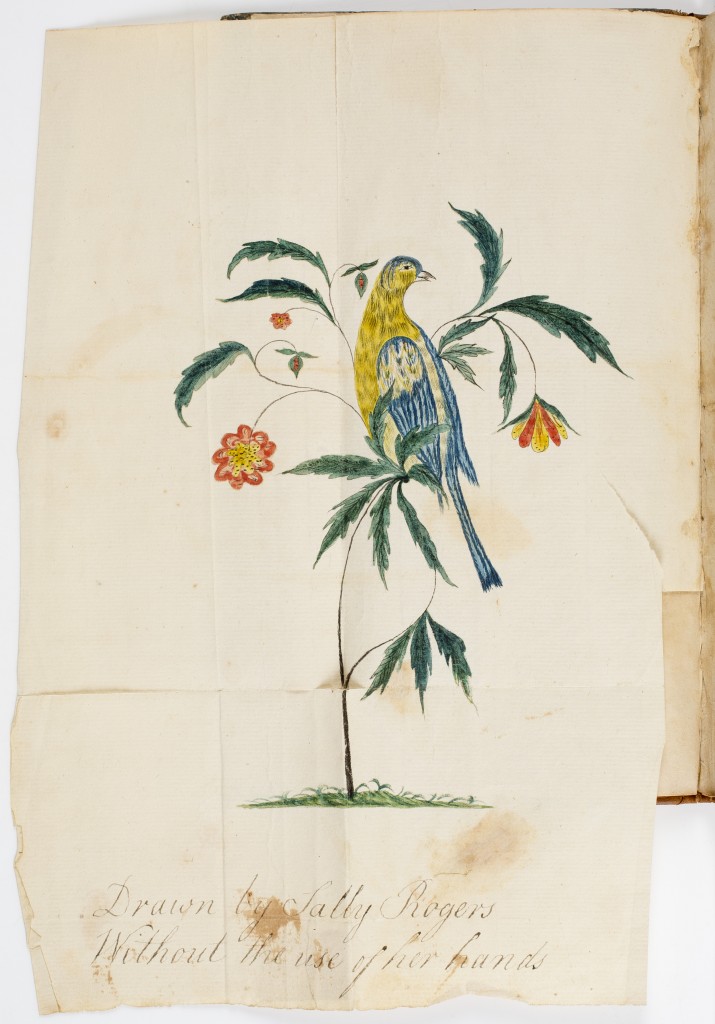Last week, in Part I, Amy discovered the title and date of a pamphlet missing a title page by scouring the newspapers. Now, she puts a name to a remarkable but unidentified woman.
2. The life of Ms. Sally (or Sarah) Rogers
Sometimes, I catalog a book or pamphlet and a person appears whom we know nothing about and who isn’t in the Name Authority File, the international database catalogers use to identify people.[1] When this happens, I once again dive into research to sort out the identity of the such people so that I can identify them with a unique heading in our records and they can be found as an author or subject.

Sally Rogers was such an individual. I first encountered her when I cataloged A Real Object of Charity, a small pamphlet published about April 1806 in New Hampshire. She is the subject of the pamphlet, although it gives only her father’s name, not hers; however, she did sign the original artwork accompanying it. Isaiah Thomas, the founder of the American Antiquarian Society, placed a value of $1.00 on the pamphlet, and it has resided in our collections for the past two centuries.
I couldn’t find Sally Rogers in vital records, and I was skeptical about my chances at discovering more about her due to the common nature of her name. Happily I was proved wrong, and now she can be found in our catalog as “Sally Rogers, approximately 1788-1813.” Unfortunately, her history survives primarily in ephemeral newspaper advertisements and reviews, which makes it difficult to trace her story in full and know what she thought about her life and choices.
In the pamphlet, Sally’s age is given as “about 18,” and she lived with her parents in Lempster, New Hampshire. It states that “nature seems to have denied her … the use of her limbs” – other reports described her as lacking hands and feet – but made “amends… in the exercise of other faculties as surpassing all human belief,” namely, the ability to create art by holding her instruments in her mouth and the ability to excel at such tasks as threading needles and moving with grace and decorum.

A Real Object of Charity marks the beginning of Sally Rogers’ public career as a working artist and performer. On June 17, 1806, the Repertory, a Boston paper, announced the commencement of her stay at the Columbian Museum. There she had “consented to perform in publick” and would “paint, mix colours, thread a needle, cut paper or cloth with scissars [sic] held in her mouth, &c.” Sally Rogers is unnamed in this advertisement, but the positive reviews which followed recognized the talents of “Miss Rogers.” She worked steadily for the next seven years, both under the name Sally Rogers and, after 1807, under the name Sarah Rogers. She toured from New Hampshire to South Carolina, experimenting with admission prices, taking commissions, exhibiting her work, and, in the South, sometimes working alongside Martha Ann Honeywell, another woman who lacked hands and adeptly performed artistic and feminine tasks. Sally/Sarah’s performances ended only with her death in Philadelphia on October 30, 1813. According to her obituary in the Democratic Press (Philadelphia, Pa.), she was twenty-four years of age, and her funeral would be held at the house of General James Barker.[2]
Next week, in the third and final part, Amy will clear up a case of mistaken identity!
[1] For example, the Name Authority File links different forms of an author’s name, so that you’ll find the Harry Potter books if you look for J.K. Rowling, Joanne K. Rowling, or Jo Rowling. It also differentiates between people, so that the works of Cotton Mather, the New England Puritan (entered under Mather, Cotton, 1663-1728) aren’t confused with the works of Cotton Mather, the professor of geography (entered under Mather, Cotton, 1918- ).
[2] Lanning, A. “Sally Rogers: The Celebrated Paintress.” In Historic Deerfield (Summer 2012).

Love this series, and the glimpse into the fascinating world of name authority work!
I’m glad you’re enjoying the series; I had a lot of fun writing it. I really enjoy doing name authority work, and it’s always rewarding when one finds what one has been searching (and sometimes searching and searching) for!